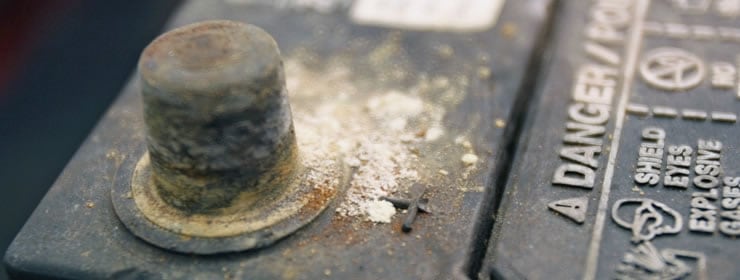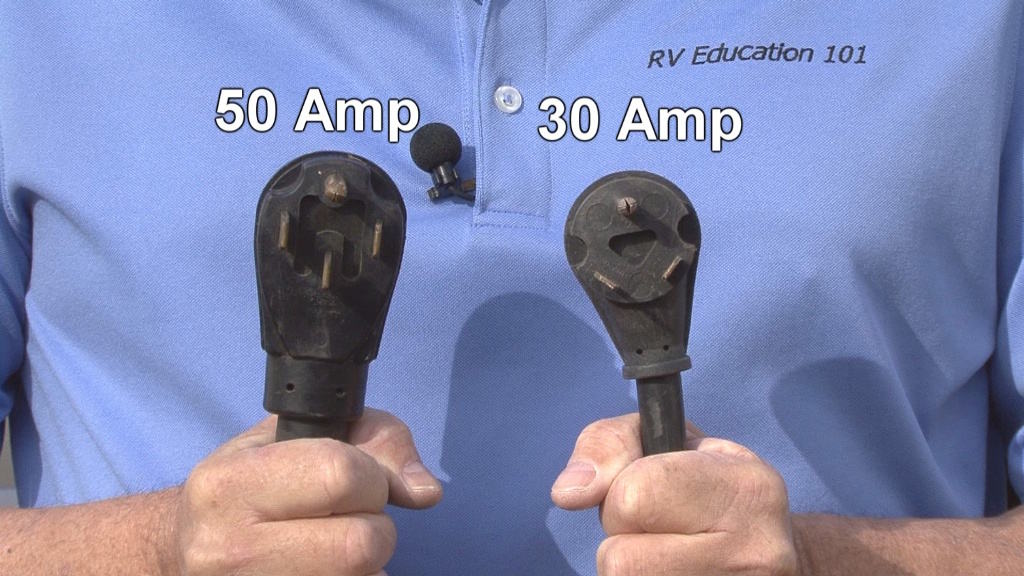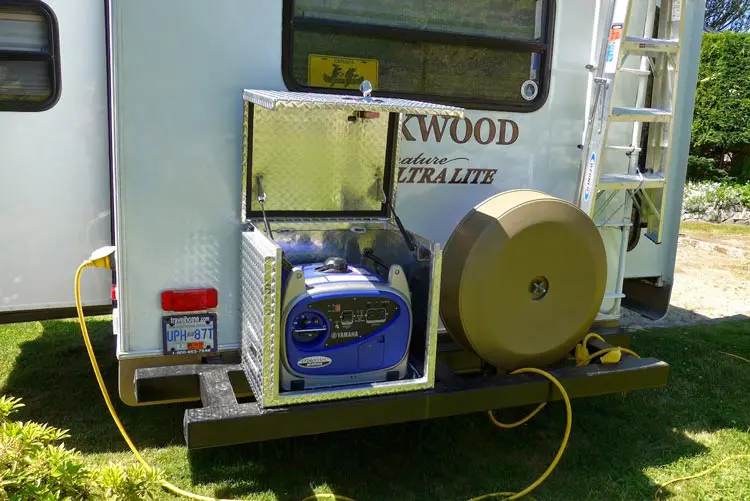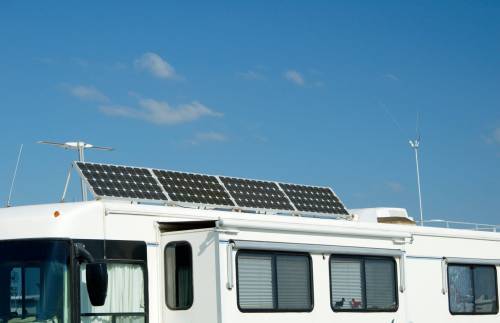Last Updated on April 4, 2022 by Ted Mosby
Living in a five-star hotel is excellent, but it cannot be compared to the freedom you get when staying at one of your locations, while also enjoying all the amenities, luxuries, and conveniences that your RV has to offer.
However, to make sure everything runs smoothly, your RV needs a reliable and adequately functioning source of power.
This means every appliance inside your RV, such as the refrigerator, TV, microwave, oven, etc. depends on the RV batteries. If your RV batteries aren’t working correctly, you will not be able to fully enjoy the benefits of having an RV.
Just like your laptop, phone, or home batteries, RV batteries are also chargeable to keep things running smoothly.
The question is how to charge RV batteries? and what are the best practices that you can use to charge RV batteries to extend their lifespan?
Your RV comes equipped with a shore power (generator power) that is intended to transform 110V AC power to 12V DC power. However, it doesn’t have enough strength and is only used to trickle-charge the batteries.
You should remember that when the RV battery runs below 50%, the RV converter could take up to eight hours to stock 100% charging.
However, to reduce the time needed to charge the RV battery to the fullest, you can consider upgrading to a four-stage, which is far more powerful and take less time to charge the battery.
It is also highlighted that if you consider overhauling the entire internal RV converter, you will have to pay $500, while an external charger cost is only $50.
Camping Gear SALE!
We have teamed up with Ape Survival to give you a huge 25% off EVERYTHING on their store! They have camping gear, hiking gear, survival gear and much more, all at 25% off when you click the link below.
SHOP NOWHow to Charge RV Batteries?
An RV battery can be charged through an RV converter that is capable of getting AC power and then converting it into DC power. RV batteries could also be charged using solar power, wind power, or a tow vehicle’s alternator.
Below, I will have outlined everything related to RV batteries, including how you can charge RV batteries properly and extend their lifespan.
So, let’s get started!
RV Batteries & Their Usage?
Like any other battery, an RV battery is also a device intended to store charge to supply power to RV appliances and keep them running smoothly. It doesn’t mean that an RV battery generates electricity by itself, but they are capable of storing the power in chemical form.
Since they don’t have the ability to generate power, you have to keep them charged.
The only purpose of batteries in an RV is to store the electricity to keep all the RV systems and appliances running efficiently. RV appliances that are recognized as the most-power-hungry appliances include RV air conditioning units, microwaves, over, power slide-outs, and coffee makers.
Additionally, gadgets such as hair dryers are also considered power-hungry devices.
However, what makes RV batteries different from the batteries used to start the engine is that they are intended to run for extended periods, so you can enjoy your RV’s amenities and appliances when boondocking or dry camping, and don’t have the facility of hookups.
What is Battery Sulfation?
Since RV batteries are chargeable, you must keep checking the power to determine if they need charging. Once the RV battery runs out of charge and falls below the minimum charge percentage, Sulfation results.
The lead sulfate crystals start building, which causes them to affect battery performance. It can also be occurred either because of battery failure or extended charging times. Of course, it can be remedied by having a controlled overcharge, which will dissolve the crystals.
Camping Gear SALE!
We have teamed up with Ape Survival to give you a huge 25% off EVERYTHING on their store! They have camping gear, hiking gear, survival gear and much more, all at 25% off when you click the link below.
SHOP NOWHowever, to do this, I highly suggest hiring a professional who can do this in a proper and safe way to get back the battery to its standard functionality.
Moreover, to prevent Sulfation, you should keep your RV batteries charged and never let them fall below 20%.
How to Charge RV Battery Using the Converter?
Using the converter to charge the RV battery can be done in multiple ways. You can hook up your RV to a 30 amp or 50 amp outlet electrical grid when camping at a National Park, RV campground, or state park.
Moreover, you can also hook it up to an electrical grid at home using a 20 amp power outlet.
Furthermore, no matter whether you are at a campground or on the road, you can quickly hook up your camper to a generator to keep the RV batteries charged.
1. Using 30 Amp or 50 Amp Hookup to Charge RV Batteries
In my previous article, I have discussed in detail “Do I Have to Plugged in the RV All the Time.” You should know that all the RVs come equipped with either a 30 amp hookup or a 50 amp hookup that can be used to charge the batteries through an electrical grid or shore power.
30 amp hookups are generally for campers small in size and don’t have many power-hungry appliances. While the larger RVs use a 50 amp hookup to supply enough power to all the appliances to keep them running efficiently.
If your RV is hooked up to shore power, the RV batteries will automatically start charging, allowing you to simultaneously run all the appliances. The process involves supplying power through a converter, which then provides the power to a 12V battery and 120VAC breaker panel as well.
The breaker panel is used to hook up all the AC outlets while, on the other hand, RV batteries will be hooked up to DC appliances. It means you will be able to run an appliance through an AC outlet – Except for the appliances that only support DC power.
2. Using Shore Power with a Home Extension to Charge RV Batteries
3. Using Generator to Charge RV Batteries
Another way that can be used to charge travel trailer batteries is by using a generator. Most RV owners prefer having propane, gasoline, or diesel generator to charge travel trailer batteries. Using generators to charge travel trailer batteries is almost similar to shore power hookups.
When using a generator, it should be connected to your camper to charge travel trailer batteries and run AC power appliances simultaneously. During this process, RV batteries will still continue supplying power to DC lights.
How to Charge RV Battery Using Direct DC Power?
It is also possible to charge your travel trailer batteries directly through DC power if you want to bypass the converter process. However, these processes will not run AC-powered appliances simultaneously.
Using any of the below methods means the power will be transferred to batteries to charge them first and then transferred through an inverter to power AC appliances.
Moreover, in this scenario, the RV batteries would transfer power to both AC and DC RV appliances, including lights, while the charging process is still going on. You should also understand that using a battery and inverter to supply power to AC appliances is less efficient than powering through the shore power.
Furthermore, while the running RV appliances are off of it, your RV battery will take more time to get fully charged. It is because the appliances need more power to run, resulting in less power transfer to batteries to get charged.
1. Using Alternator to Charge RV Batteries
Using a tow vehicle’s alternator is a popular way to charge a 12V battery. This is the way that most motorhome owners use to keep the house batteries charged. The primary job of an alternator is to convert the mechanical power to electrical power. So, where does the mechanical power come from?
Well, when the vehicle engine starts and the belt rotates the alternator, it produces mechanical energy. Using the Alternator process to keep your RV batteries charged is certainly a great way when you are traveling for an extended period of time.
But it doesn’t mean that it is also a good way for those constantly staying in one place for a longer time. The reason is that you would have to idle your camper to charge the batteries, which isn’t beneficial for your vehicle.
2. Using Wind Power to Charge RV Batteries
Yet another way to charge RV batteries is by using wind power. In this case, wind turbines will be used to charge the RV batteries. However, this method is popular among those living in windy areas doesn’t move from one place to another more often.
Using solar panels to charge travel trailer batteries is somehow similar. While using wind power, you will have to use turbines passing through the charge controller and then supplying energy to your RV batteries.
Moreover, although you can use wind power to charge RV batteries, you should know that it is not safe, efficient, and even legal in some regions. In terms of its efficiency, it affects the fuel efficiency by creating drag while you are driving.
3. Using Solar Panels to Charge RV Batteries
Solar energy is incredibly popular among RVers. You just have to install a solar panel on your RV roof to get more than enough power to run all your RV appliances efficiently. A solar power system involves a solar panel connected to an amp controller, and finally connecting to the battery. The Amp controller is also sometimes referred to as a charge controller.
The benefit and the primary goal of having an amp controller are to protect your RV batter against overcharging which can affect the battery performance and lifespan. You will also find two types of amp controller, PWM (Pulse Width Modulation) and MPPT (Maximum Power Point Tracking).
However, the MPPT power charge controller works more efficiently than a PWM charge controller. Moreover, these charge controllers also have different power levels that are calculated in amps.
While charging RV batteries through solar power, you will be required to use a power controller of greater amps than the combined amps of both the battery and the solar panels.
So, how to calculate Amps?
To calculate amps, you will have to divide the solar panel’s watts by your RV battery’s volts. For example, to get amps by dividing wattages and volts, the formula is,
W/V= Amps (Where the W is watts, V is volts).
After you have the amps calculated, you will need to have a charge controller greater than amps.
Wrapping Up
That is all about how to charge RV batteries. I have discussed all the ways you can safely charge your RV batteries and keep them at their peak condition.
As mentioned above, some of the ways are useful to charge RV batteries when you are dry camping or boondocking and searching for a way to keep your RV batteries charged and appliances running.
Moreover, suppose you think your batteries are not performing well and need troubleshooting. In that case, I suggest calling a professional rather than doing it by yourself if you are not familiar with them.
For further queries, do not hesitate to type a comment below.
FAQ
Although you can use wind power to charge travel trailers if you are living in a windy place and don’t move around more often, you should keep in mind that it is not an efficient and safe way. Moreover, it also reduces the fuel-efficiency by creating a drag during your driving. It is also illegal to generate power using wind to charge batteries.Does charging RV batteries using wind power is safe?
Yes, it is perfectly safe to charge RV batteries using an inverter.Is it safe to charge batteries using an inverter?
Table of Contents





